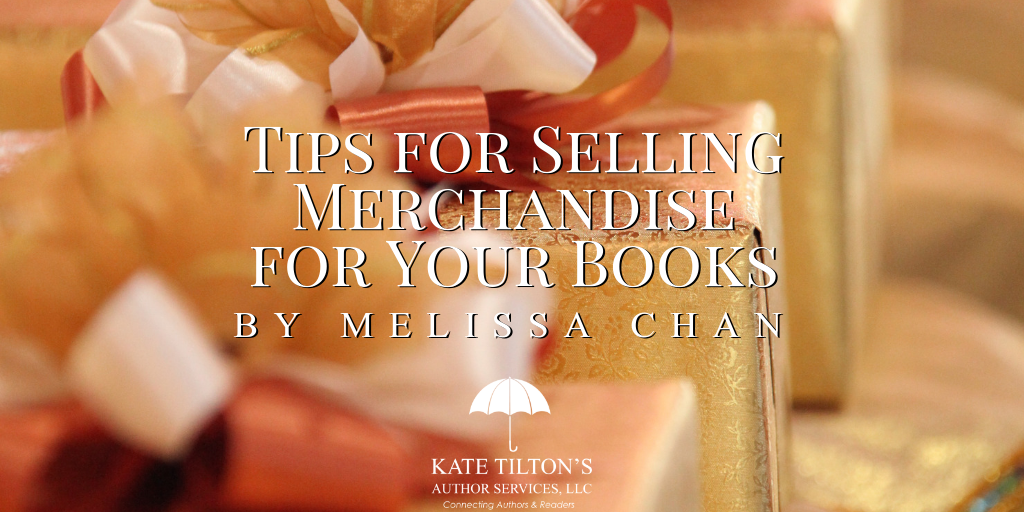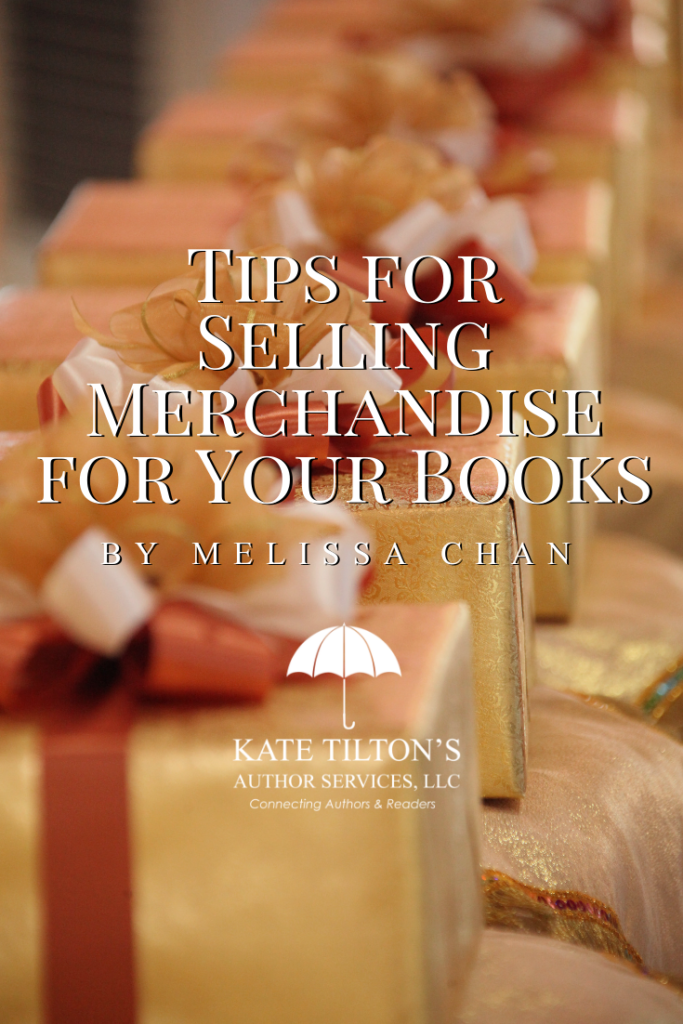
Making merchandise for one’s book is a fun and rewarding experience for most authors. Seeing your cover art or a favorite quote from your novel being worn by an adoring fan can be a hugely satisfying experience. Perhaps that shirt sparks a conversation with someone who is not familiar with your work to help create interest through word of mouth.
Most authors already have direct access to their readers through their newsletter, website, and social media which offers the perfect outlet for direct marketing to the most devoted members of any fan following. Branded shirts, water bottles, hats, and other swag can be offered as prizes for giveaways for your latest book tour.
In addition, the potential profit of selling just a few products is nothing to shy away from. It can offer a steady stream of supplemental income while you finish up your next novel.
Here are a few tips to help you get started on your way to being successful at selling merchandise for your books.
Start Small Then Go Big
The price of the products themselves can feel like a major barrier to entry when considering merchandising. Buying the product, printing your image on the product, and shipping, are costs that tend to add up very quickly when dealing with the manufacturing and sale of physical items. Unlike books that have the option for eBook versions, it is quite unlikely that anyone would be interested in buying a digital image of a shirt instead of the actual shirt itself.
A common way for companies to reduce some of these fees it to produce the items at scale. In this case, the price per item goes down, in the same way that buying a gallon of milk is cheaper per cup than buying a single serve carton. Try not to be tempted by manufacturer prices. These low costs are typically rates for producing hundreds if not thousands of units of the exact same product at once. And you will be left not only to foot the bill, but to store all these products until you can hopefully sell them.
The solution? Make the products after they are purchased, this method is commonly known as print on demand. Doing this allows you to wait until you sell an item, and use that money to create and ship out the product. There are many companies that offer this type of service. With ever-changing pricing and offerings, it is best to do your research when the time comes to see which option is best for your particular situation. Depending on where your audience is located, there are different companies that can serve either the USA, UK, Canada and beyond. They will produce and ship directly from that country to avoid the hassle and cost of custom or duties.
Although printing on demand can be costly per item, it saves money elsewhere in terms of investment and risk. After you know that your readers love your products you always have the option to produce at scale and take advantage of the less pricey manufacturer options available.
Manage Your Original Design Files
When authors commission book covers, illustrations, or any sort of designs from freelance artists, they often receive the files to their specifications and are satisfied. These file types are typically .jpegs or .pngs and vary in size. Although desirable for digital and print use, most merchandise will require entirely different files.
In order to print high-resolution images on items such as the popular graphic t-shirt, one will need a large file, typically over 4,000 pixels on each side. It is nearly impossible to upscale an undersized image and not have it appear fuzzy/pixilated. If it is also desired for the image to display independently of its background such as in this collection of shirts it is necessary for the image to have a transparent background. This can be easily done with access to original design files with the layer properties intact. Without these files, it can be a complicated, if not impossible task to remaster the artwork.
Whether or not you are considering printing your images onto products, it is always best to ask the artist or designer for the original design files at the time that they create them. This will save you a huge headache from trying to track them down in the future. In some cases, you may never be able to get a hold of the designer again and need to go through the costly proccess of recreating the designs from scratch. Depending on the contract many freelancers will freely give you these files if you ask for them. In some cases, they will consider the files proprietary and charge extra. In either case, it is best to understand that these files have value and it is always best to hang onto them for future use.
Mind Your Profit Margins
Remember that wherever your merchandising journey may take you, that you are first and foremost an author. Your time is best spent writing, connecting with your readers, and being an active part of the literary community.
If you are an author who is looking to offer merchandise as a way for improved financial stability, then make sure you keep this in mind at all times. Generating profit should be your main focus, otherwise, you risk wasting your time that would best be spent elsewhere. This is another reason why it is important not to invest too much monetarily, at least at first.
In Conclusion
Since there is little to no upfront investment involved, every author who is considering merchandising their books should give it a try. It can be a simple way to generate a bit or a lot of side income. This is especially true for authors with a pre-exitisting fan base that has been built up over many years.
Have you tried to make merchandise for your books? What was your experience like?
About Melissa Chan:
 Melissa Chan is the designer and founder of Literary Book Gifts. She took her love of classic literature to bring books to life on shirts and bags. Use the promo code K8Tilton for 20% off anything in the store. No minimum and it will not expire.
Melissa Chan is the designer and founder of Literary Book Gifts. She took her love of classic literature to bring books to life on shirts and bags. Use the promo code K8Tilton for 20% off anything in the store. No minimum and it will not expire.


Leave a Reply